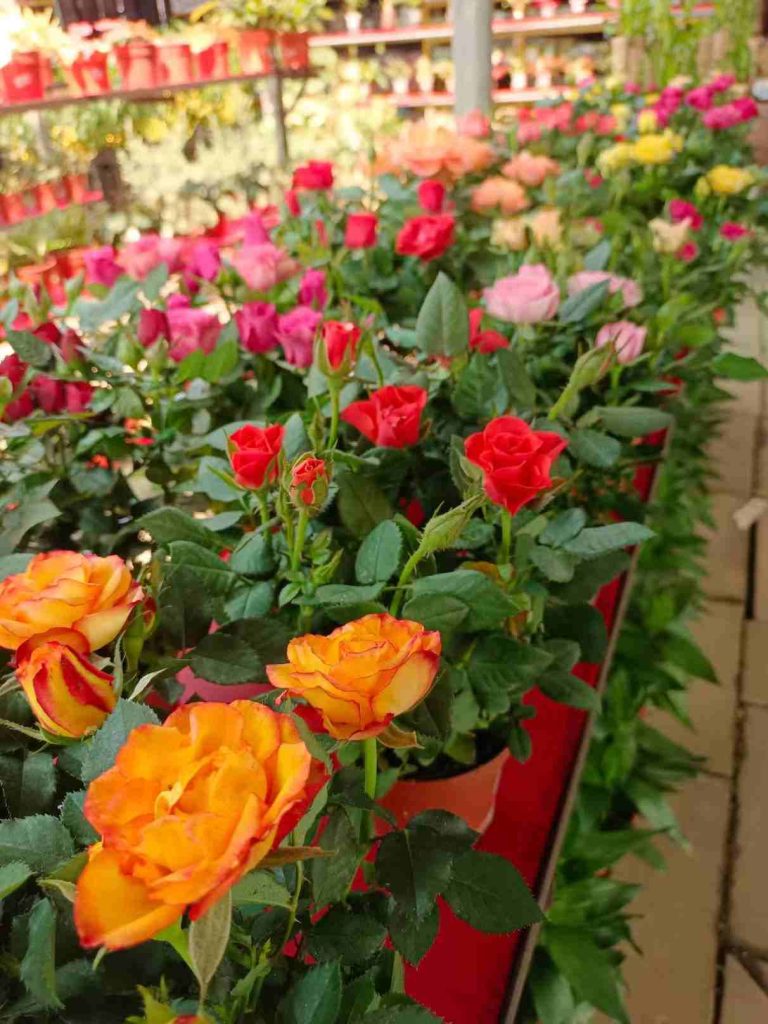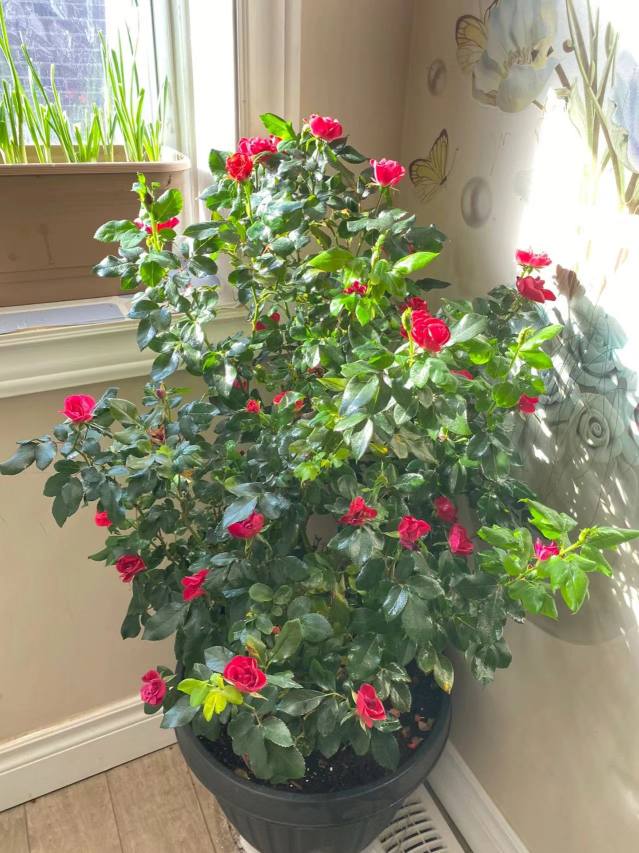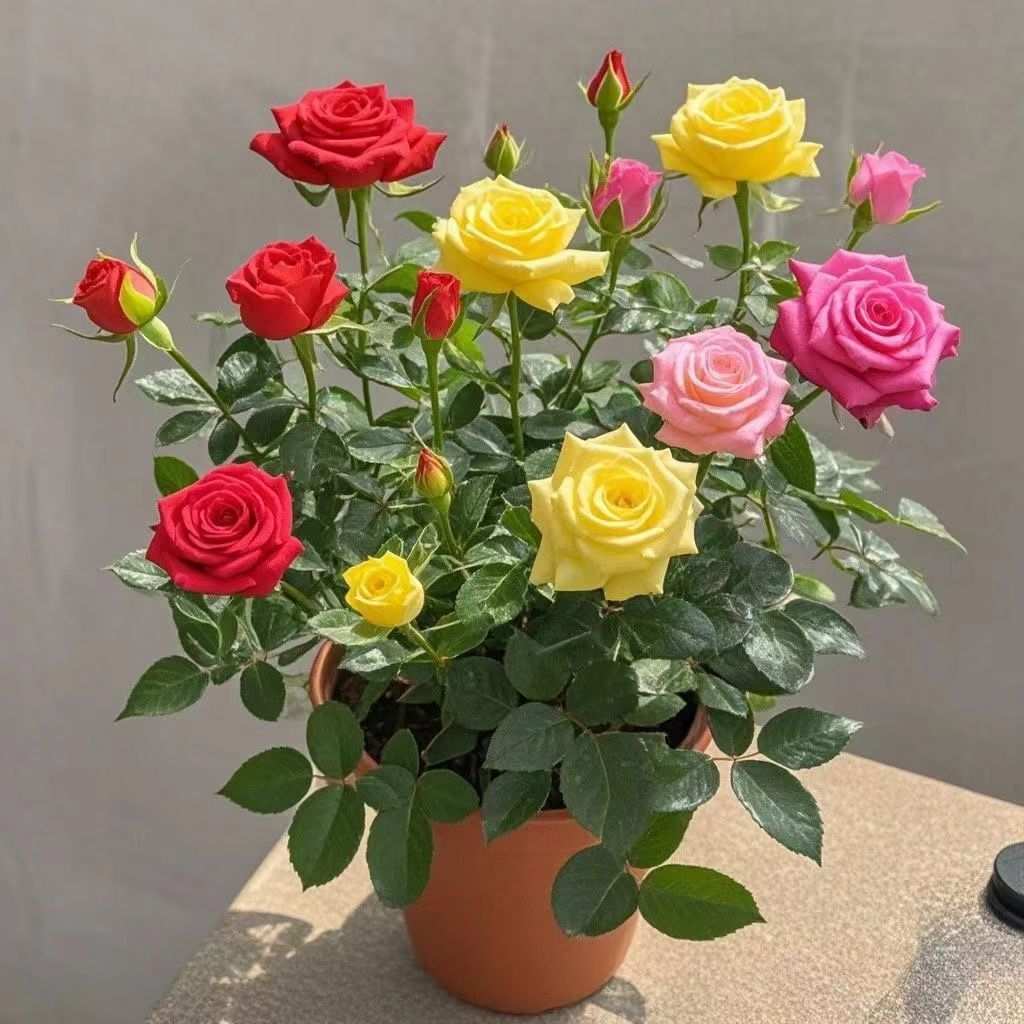How to Grow Roses Indoors: A Beginner’s Care Guide
How to Grow Roses Indoors: A Complete Care Guide for Beginners 🌹
Essential Steps for Growing Roses Indoors

1️⃣ Choose the Right Variety for Indoor Growing
Start with these beginner-friendly roses perfect for growing roses indoors:
- David Austin Roses: Excellent form, fragrance, and disease resistance
- Miniature Roses: Compact size ideal for limited spaces
- Floribunda Roses: Continuous blooms and easy maintenance
2️⃣ Provide Adequate Light for Indoor Roses
🌞 Roses require substantial light—at least 6 hours of direct sunlight daily when growing roses indoors:
- Place near a south-facing window for optimal light exposure
- Consider supplementing with grow lights in low-light conditions

3️⃣ Master Indoor Watering Techniques
💧 Water when the top inch of soil feels dry to the touch:
- Spring/Summer: Water every 2-3 days
- Fall/Winter: Reduce to weekly watering
- Always water at soil level to prevent leaf diseases
4️⃣ Fertilize for Optimal Growth
🌱 Feed your roses regularly during active growth periods:
- Apply balanced fertilizer every two weeks in growing season
- Use high-phosphorus fertilizer before blooming cycle
- Dilute properly to prevent root damage
5️⃣ Prune for Health and Beauty
✂️ Regular pruning is essential for growing roses indoors successfully:
- Remove spent blooms to encourage new flowers
- Trim dead or weak wood during winter months
- Maintain good air circulation through selective pruning
6️⃣ Prevent and Treat Common Problems
🐛 Address issues promptly when growing roses indoors:
- Powdery Mildew: Improve air circulation; apply fungicide
- Aphids: Use insecticidal soap or neem oil
- Black Spot: Remove affected leaves; avoid overhead watering
Troubleshooting Common Indoor Rose Issues
Q: Why are my rose leaves turning yellow?
A: Typically caused by overwatering or nutrient deficiency. Check soil moisture and adjust fertilization.
Q: Why isn’t my indoor rose blooming?
A: Usually due to insufficient light or improper nutrients. Increase light exposure and use bloom-boosting fertilizer.
Q: My rose has leggy growth but no flowers. What’s wrong?
A: Often indicates too much nitrogen. Switch to a fertilizer higher in phosphorus and potassium.

Pro Tips for Success with Indoor Roses
- Ensure good air circulation around plants
- Use well-draining soil mixtures
- Start with younger plants for easier adaptation
- Monitor regularly for early problem detection
With proper care and attention to these guidelines, growing roses indoors can be a rewarding experience that brings continuous beauty to your home.

 How to Repot Roses: Zero-Fail Secrets for Transplanting & Propagating
How to Repot Roses: Zero-Fail Secrets for Transplanting & Propagating  Why Your Transplanted Dawn Redwoods Keep Dying: 5 Critical Mistakes (And How to Fix Them)
Why Your Transplanted Dawn Redwoods Keep Dying: 5 Critical Mistakes (And How to Fix Them)  How to Care for Indoor Lavender: The Ultimate Guide
How to Care for Indoor Lavender: The Ultimate Guide  Ultimate Rose Care Guide: How to Grow Healthy & Blooming Roses
Ultimate Rose Care Guide: How to Grow Healthy & Blooming Roses 